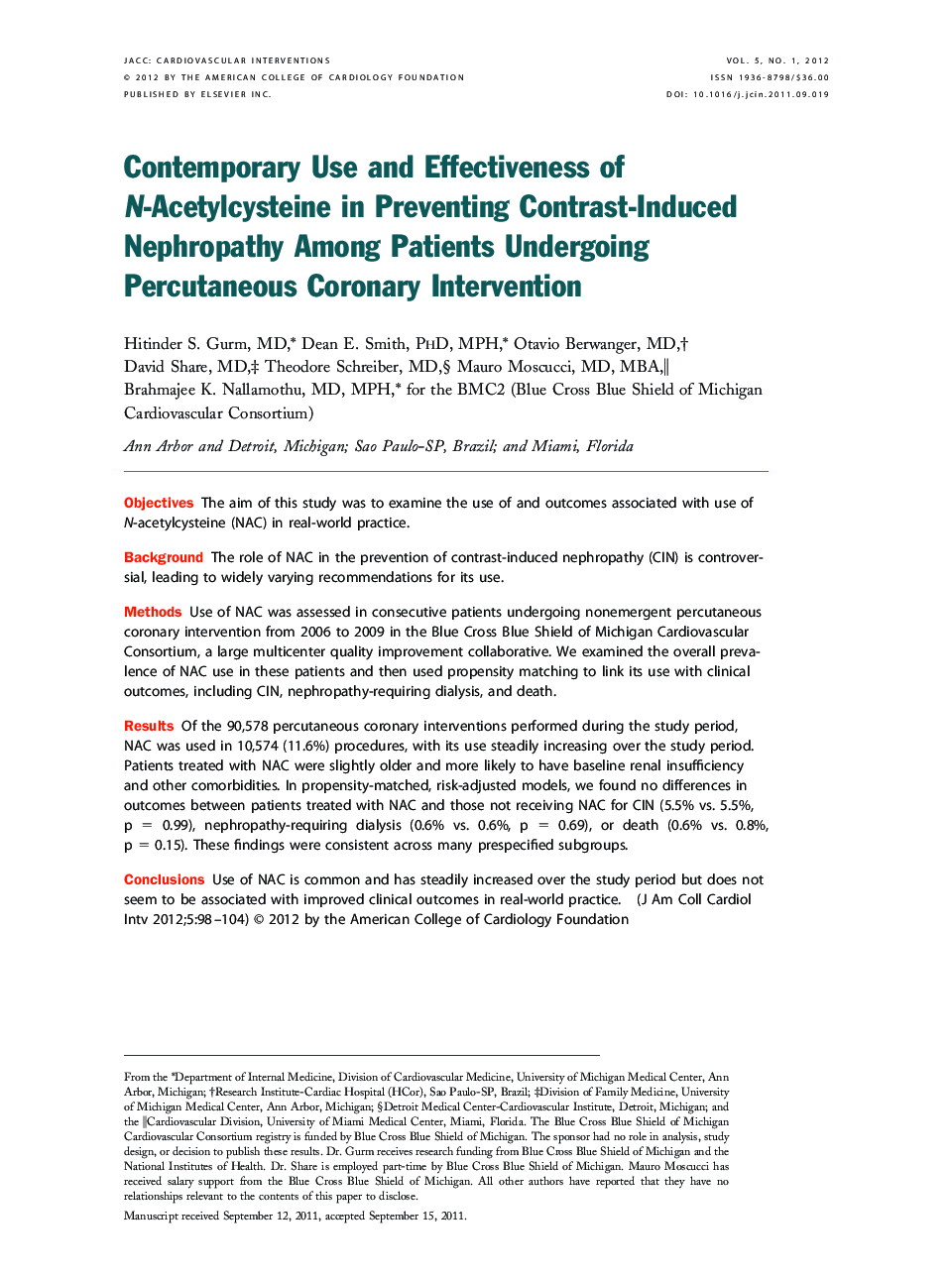| Article ID | Journal | Published Year | Pages | File Type |
|---|---|---|---|---|
| 2941219 | JACC: Cardiovascular Interventions | 2012 | 7 Pages |
ObjectivesThe aim of this study was to examine the use of and outcomes associated with use of N-acetylcysteine (NAC) in real-world practice.BackgroundThe role of NAC in the prevention of contrast-induced nephropathy (CIN) is controversial, leading to widely varying recommendations for its use.MethodsUse of NAC was assessed in consecutive patients undergoing nonemergent percutaneous coronary intervention from 2006 to 2009 in the Blue Cross Blue Shield of Michigan Cardiovascular Consortium, a large multicenter quality improvement collaborative. We examined the overall prevalence of NAC use in these patients and then used propensity matching to link its use with clinical outcomes, including CIN, nephropathy-requiring dialysis, and death.ResultsOf the 90,578 percutaneous coronary interventions performed during the study period, NAC was used in 10,574 (11.6%) procedures, with its use steadily increasing over the study period. Patients treated with NAC were slightly older and more likely to have baseline renal insufficiency and other comorbidities. In propensity-matched, risk-adjusted models, we found no differences in outcomes between patients treated with NAC and those not receiving NAC for CIN (5.5% vs. 5.5%, p = 0.99), nephropathy-requiring dialysis (0.6% vs. 0.6%, p = 0.69), or death (0.6% vs. 0.8%, p = 0.15). These findings were consistent across many prespecified subgroups.ConclusionsUse of NAC is common and has steadily increased over the study period but does not seem to be associated with improved clinical outcomes in real-world practice.
